There are a number of misconceptions about General George S. Patton, Jr., and a lot of them are due to the 1970 film Patton. Though it won seven Academy Awards, including for Best Picture, Best Director, and Best Original Screenplay, and while actor George C. Scott also won the Best Actor award, it is now easy to consider it a bit dated. Frankly, it really doesn’t give the “full story” of a man who was much more than just one of America’s best generals.
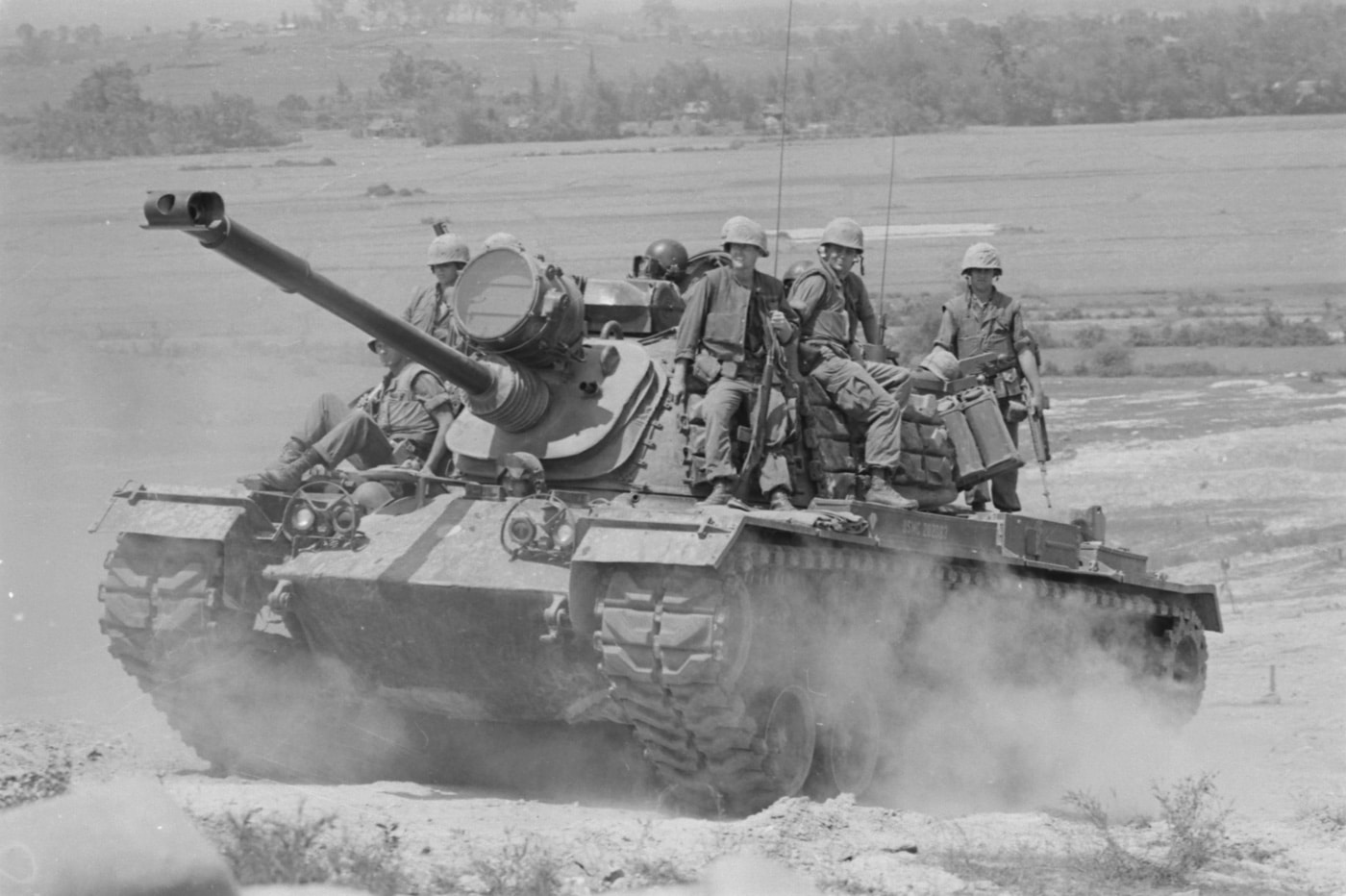
The film fails to note that Patton was an Olympic athlete, designed a cavalry saber, or that he also aided in the development of the newly formed Tank Corps soldier insignia that comprised “the firepower of the artillery (red), the mobility of the cavalry (yellow) and ability to hold the ground of the infantry (blue).”
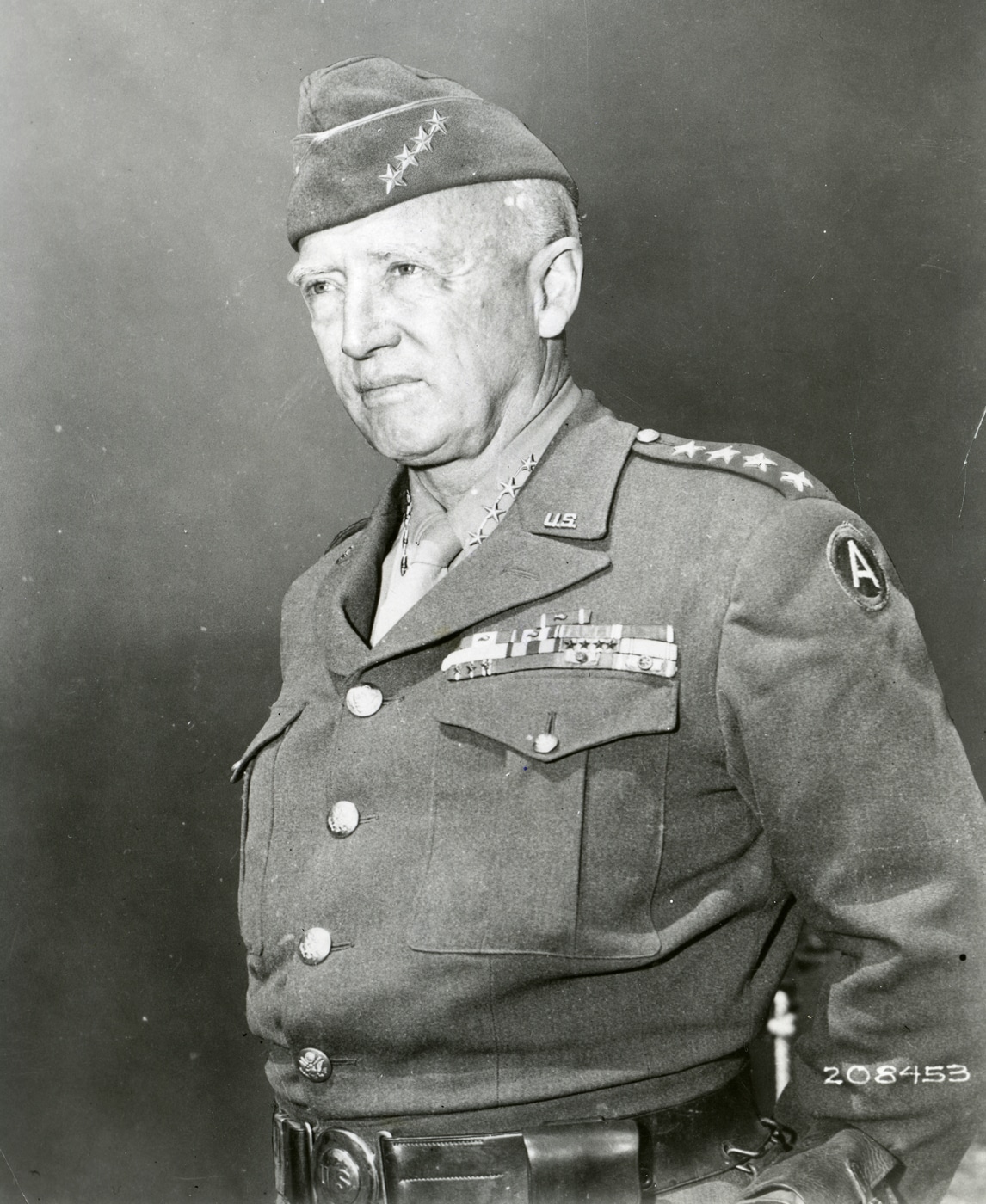
Moreover, Patton is one of those “old school” films that now make armchair historians cringe — as it featured U.S.-made M48 “Patton” tanks standing in for German armor. The fact that General Patton (the man) must face Patton tanks onscreen does seem even a bit ironic in a way. This wasn’t, of course, the first time a “Patton” tank would be seen with German markings on screen. In the 1965 film Battle of the Bulge, a number of earlier M47 Patton tanks were dressed up and engaged American M24 Chaffee tanks.
History of the Patton Tank
What is noteworthy about the Patton tank is that it wasn’t just a single tank design, but rather was a series of tanks that began with the M46 medium tank. Designed to replace the M26 Pershing and M4 Sherman, the M46 was originally developed as a heavy tank but later reclassified as a medium tank. It saw limited use in the Korean War, and a total of 1,160 were produced at the Detroit Arsenal Tank Plant between 1948 and 1949.
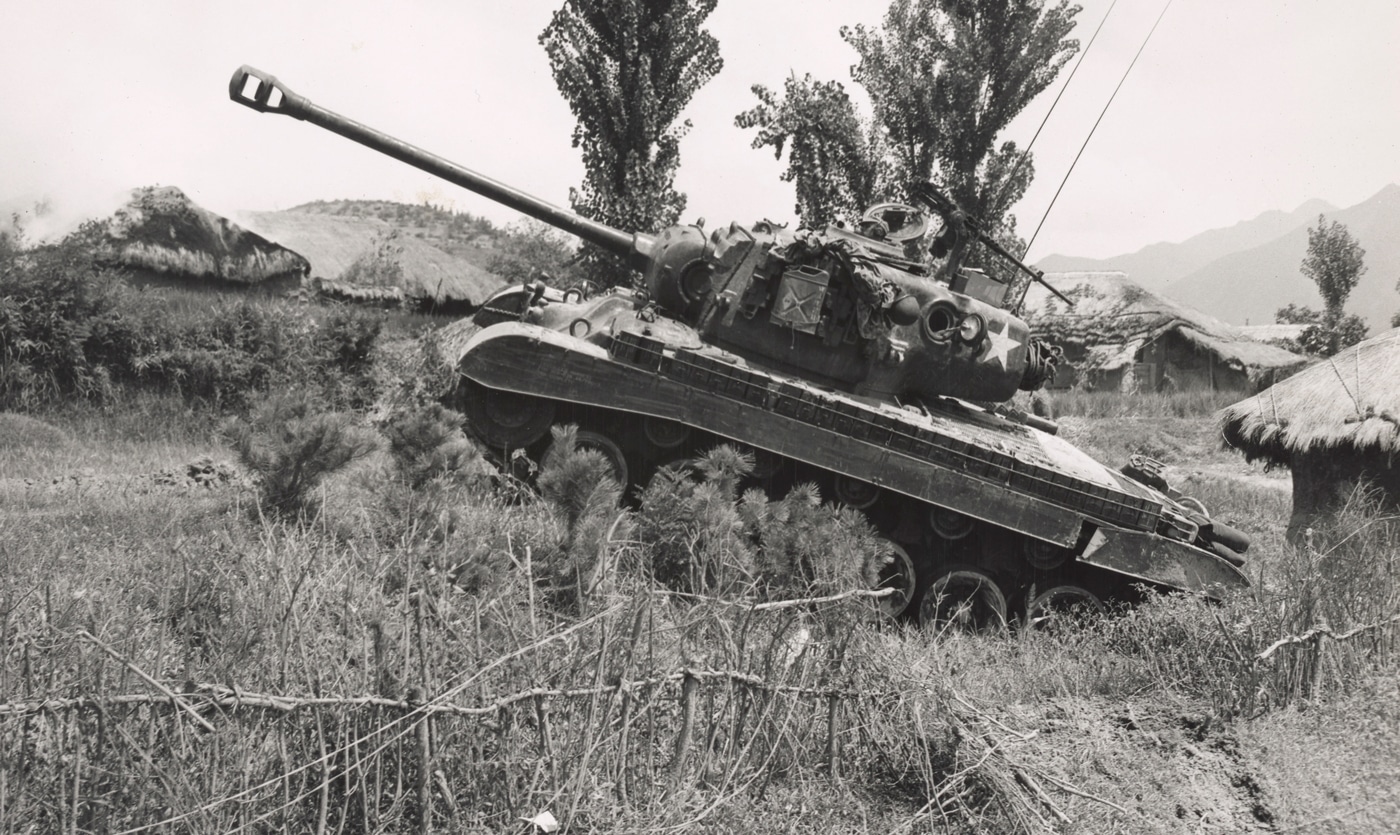
Further development continued, and the result was the M47, with production beginning in 1951. In general, its characteristics were not all that different from the M46 — as it featured essentially the same chassis with the turret designed for the prototype T42 medium tank. The M47 was also the first U.S. tank to have an optical (stereoscopic) range finder, which increased the gun’s probability of hitting targets.
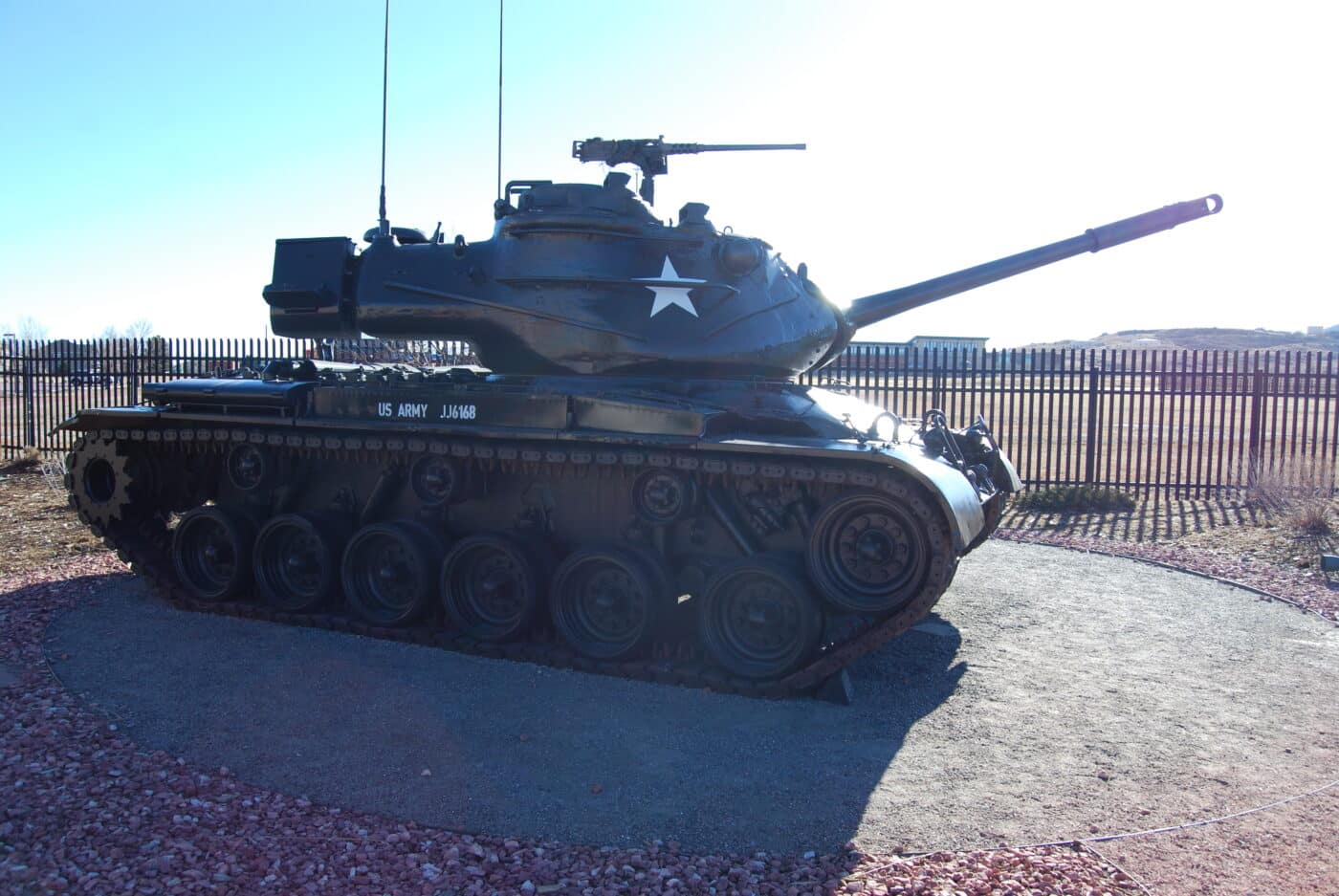
Though a stopgap and interim design, the M47 has largely been considered a successful tank design for the early Cold War era, and around 8,600 were produced until 1953. Large numbers were shipped to client states — notably South Korea. However, it was also criticized for its short operating range of just 70 miles.
Enter the M48 — the Ultimate Patton?
The M48 had much of the same automotive characteristics as the M47, as well as its 90mm gun. Production began in 1952 — thus overlapping with the M47 — and deliveries were made to the United States Army the following year. In addition to being produced by both Ford and the Fisher Division of General Motors, Alco at Schenectady, New York, also manufactured the tank, with final production being completed at Chrysler’s Delaware plant.
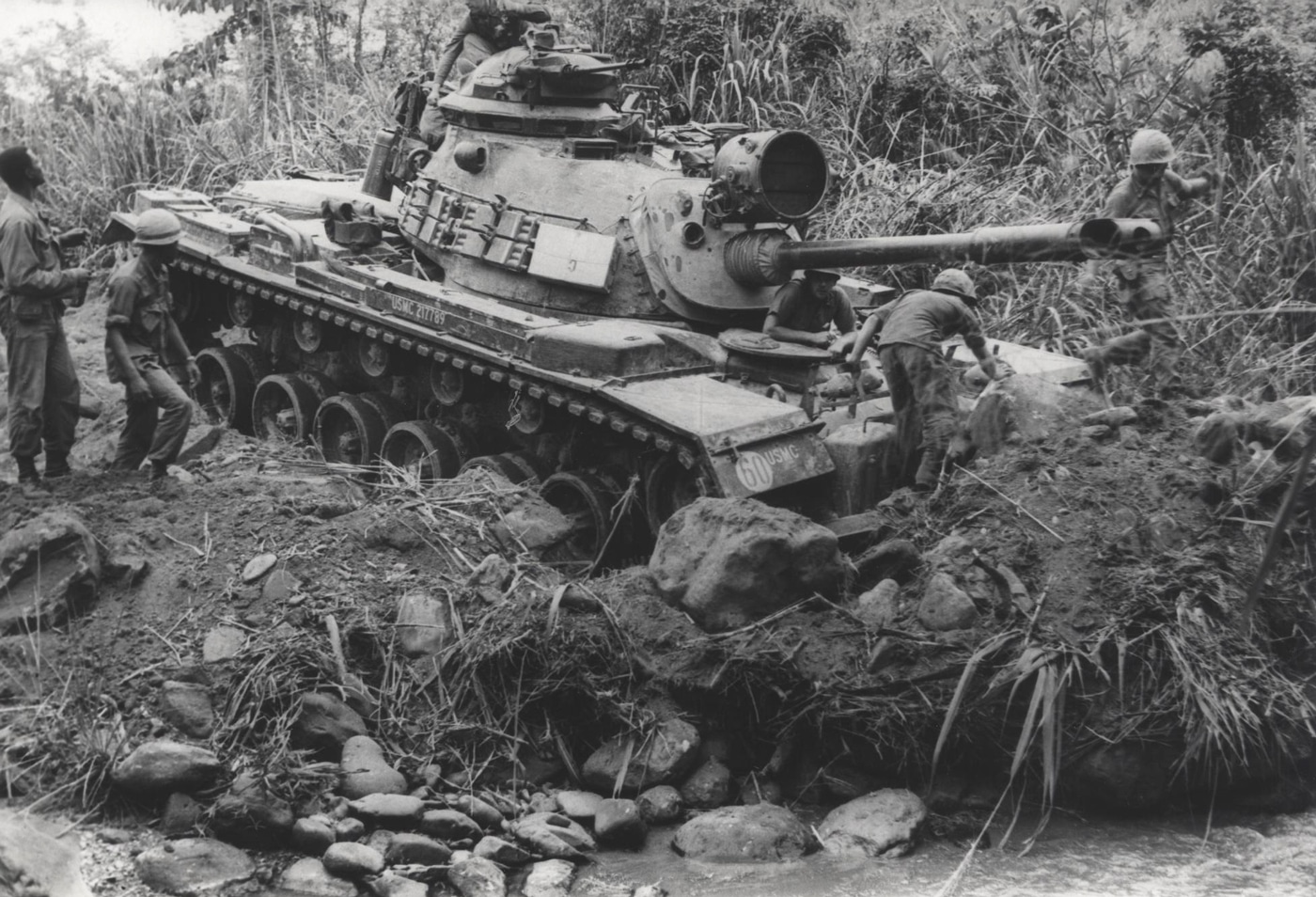
In many ways, the M48 was the first truly modern American tank.
It had a few “teething problems,” however, as it had been rushed into service as the Korean War made all too apparent the shortage of U.S. tanks. Yet, as it was refined with subsequent upgrades, it proved to become one of the most widely used medium tanks in the world during the Cold War. Many are still in service around the globe today.
That is a true testament to the design.
Armor Issues
The M48 hull and turret were both cast armor construction, yet its turret wasn’t considered ballistically well shaped for anti-tank weapons that it went on to face in combat, notably the RPG-7 that was encountered in Vietnam. The turret was 120mm (4.7 inches) thick at the front, but only 76mm (three inches) thick on the sides.
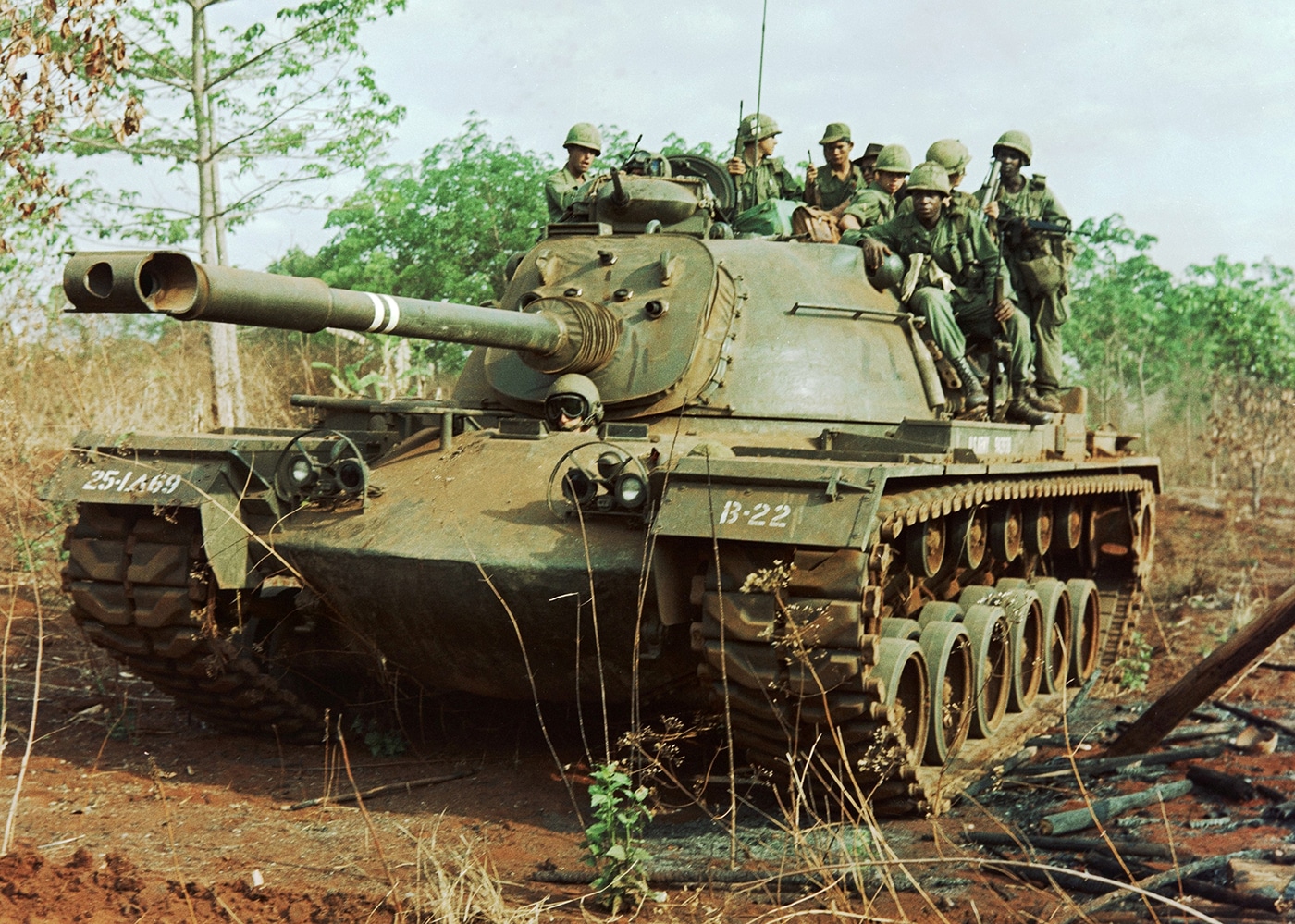
As a result, tank crews would fit sections of track on the sides to provide extra defense. The tank’s elliptically shaped armor was designed by Joseph Williams, who had played a hand in designing the M41 tank and the turret of the Army’s experimental T42. He is also credited with designing the enlarged turret ring that also enabled the turret walls to slope down smoothly to the hull top, eliminating short traps.
It was a step forward, and set the tanks apart from early American designs — but it also really makes the M48 seem so out of place in Patton, especially when more recent films like Fury featured actual German tanks!
Conventional Layout
The M48 featured a conventional layout for the crew, with the driver seated at the front of the hull, with the other three crew members located in the turret. The commander and gun were positioned on the right, while the loader was on the left. The gasoline engine and transmission were placed at the rear of the hull, separated from the crew’s fighting compartment by a fireproof bulkhead.
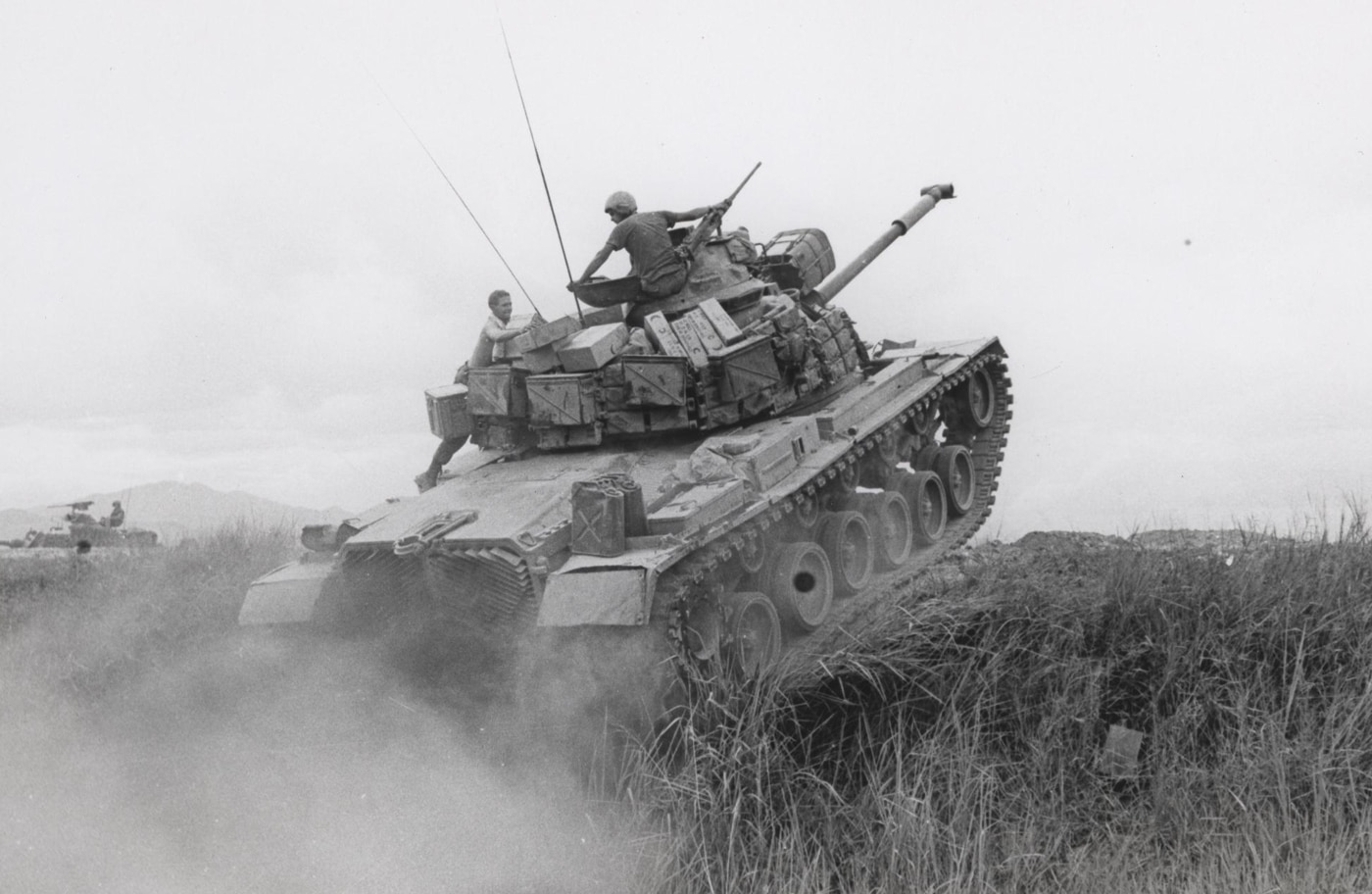
The spacious turret provided ample room for the loader to do his work with ease. As with other U.S. tanks of the era, it featured a single escape hatch in the floor of the hull.
M48 Patton Upgrades and Variants
The main armament on the early versions was the M41 90mm gun, while the secondary armament consisted of a .30 caliber coaxial machine gun, and a .50 caliber M2 machine gun at the commander’s cupola. Over time, it was determined that the main gun was considered ineffective against Soviet armor that the M48 might face, and the M48A5 variant was equipped with the larger M68 105mm (4.13-inch) gun — the American version of the British L9 — that can be distinguished from the earlier models by its prominent blast deflector.
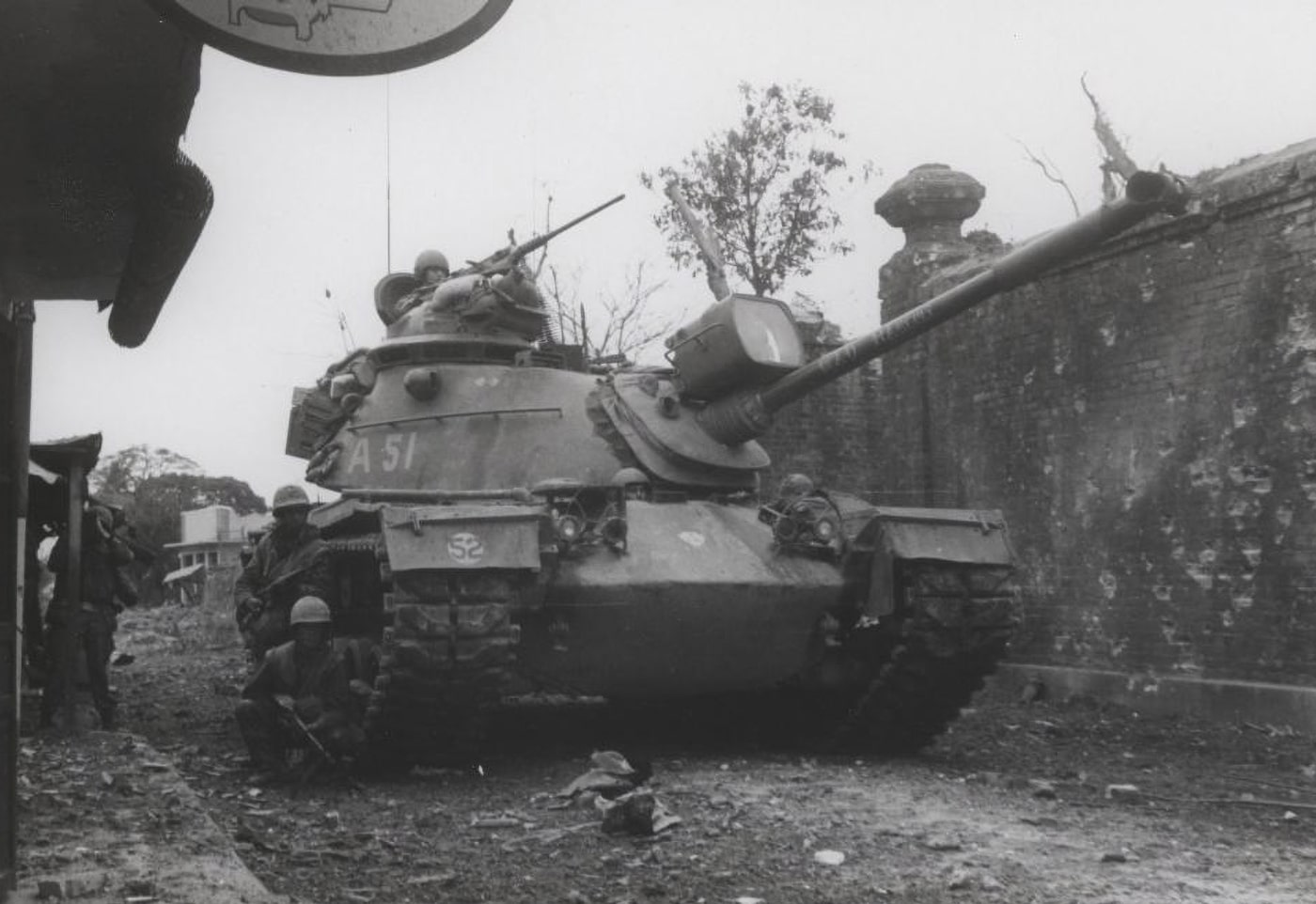
It was just one of many upgrades to the M48, and there were some dozen variants that had improved engines, fire control systems, and another improvement. The first notable enhanced model was the M48A1, which was equipped with an improved commander’s cupola. It allowed the M2HB 12.7mm machine gun to be operated and reloaded from within the vehicle.
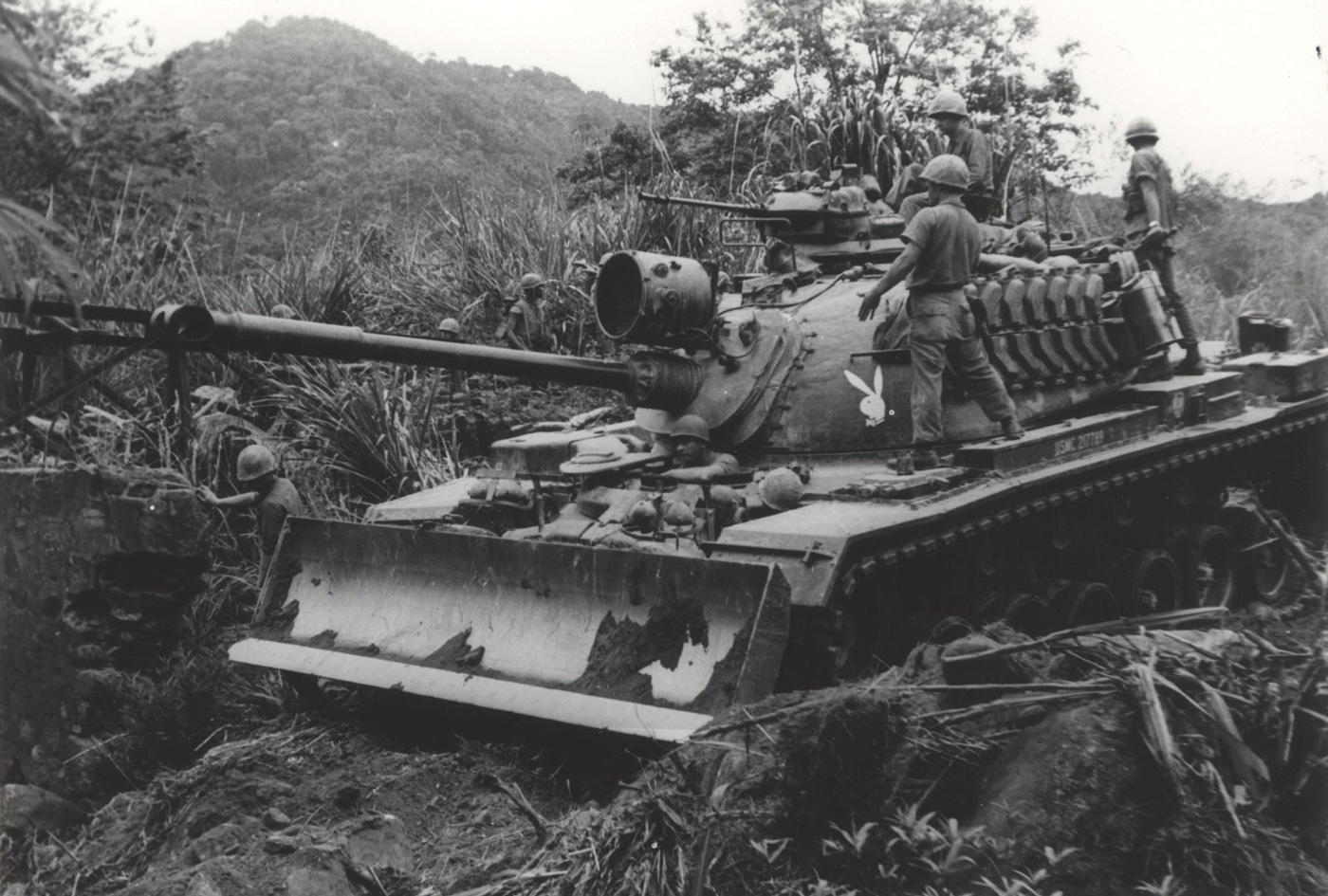
The M48A2 variant subsequently featured an improved powerplant and transmission. The later Patton also had a redesigned rear plate and improved turret controls, along with improved rangefinder and new ballistic drive and bore evacuator for the main gun. The final modification program, which ran from 1972 to 1975, resulted in the aforementioned M48A5 — a tank that fell only a little way short of the M60 tank’s specifications.
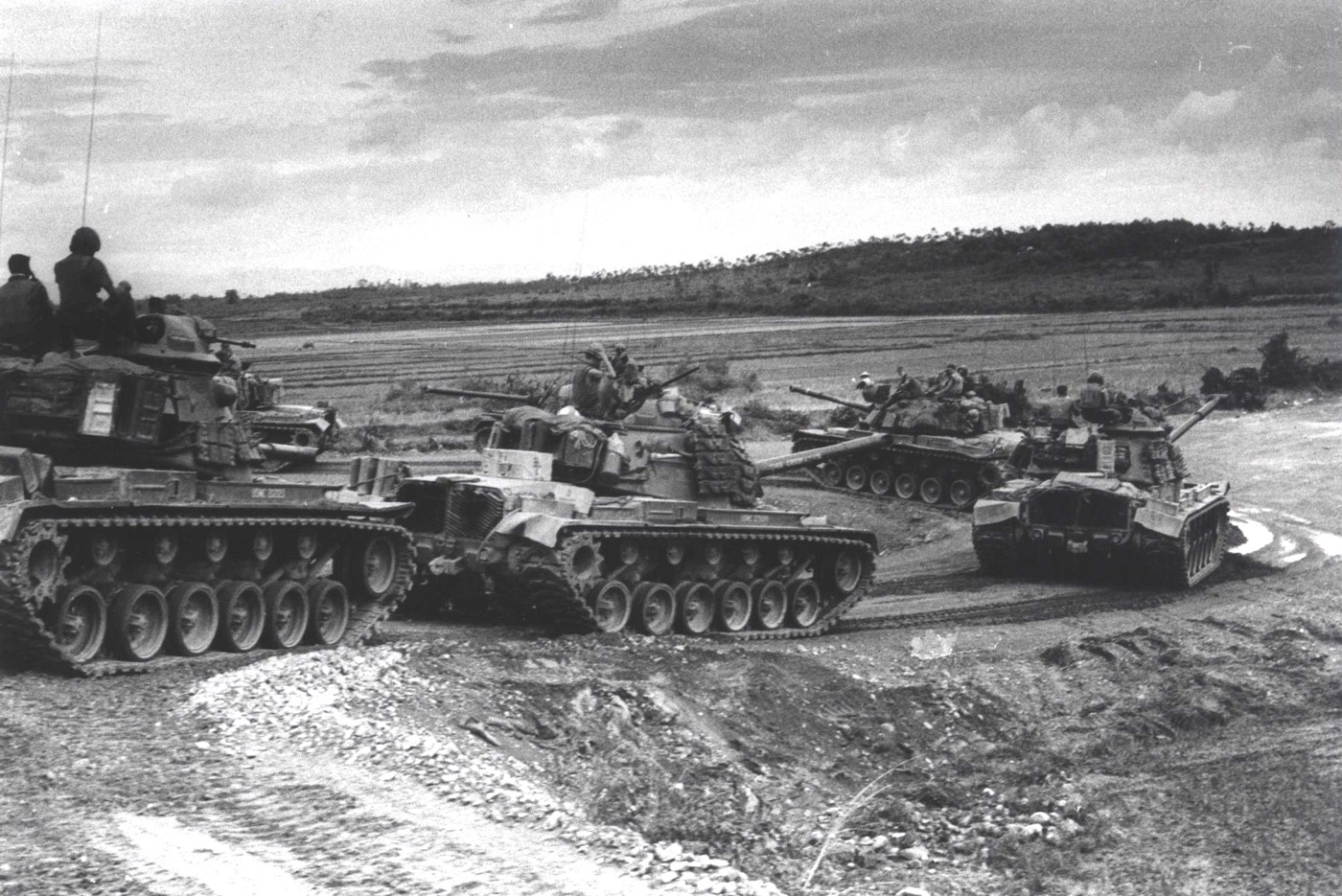
The M48A5 featured a turbo diesel engine and an improved operational range that now surpassed 300 miles. Additionally, the coax machine gun was updated to the M219 chambered for the 7.62 NATO cartridge. The M219 was an evolution of the original M73 and was designed to reduce malfunctions that were seemingly common in the original weapon.
In addition to the multiple upgrades, specialized models were produced and included the M48 AVLB armored vehicle-launched bridge, and M67 Flame Thrower Tank (known fittingly as the “Zippo.”).
Combat History of the Patton Medium Tank
If George S. Patton was looking down from a headquarters in the sky, he no doubt would have wanted to see how the tanks that bore his name fared in combat.
He’d probably have mixed feelings, to be honest.
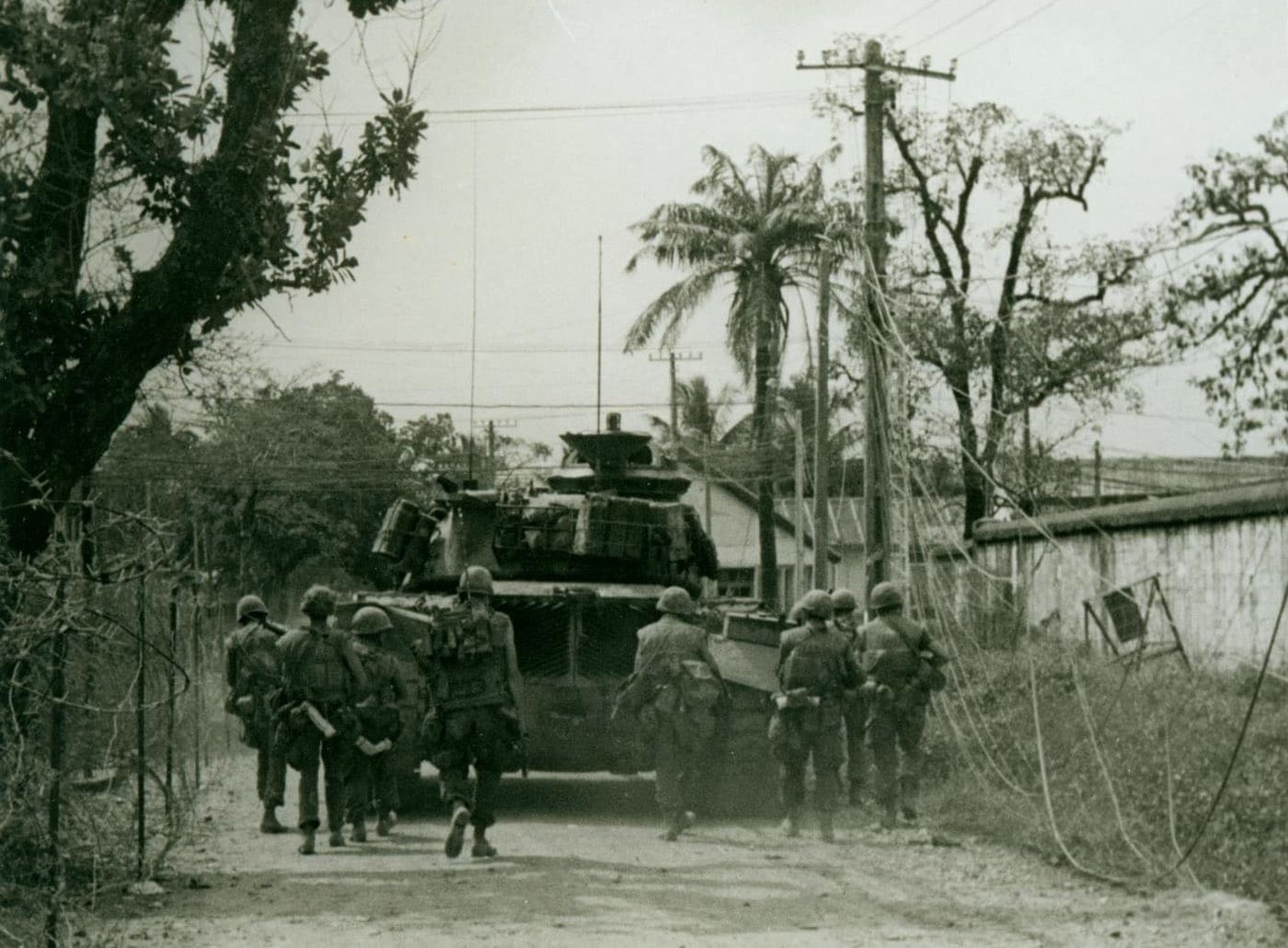
The M48 was employed in combat during the Vietnam War, where, despite original concerns that South East Asia didn’t have terrain that was well-suited for tanks like this, the Patton served successfully in an infantry support role. In addition to service with the U.S. military, the M48 tank was supplied to the ARVN (Army of the Republic of Vietnam) up to 1975.
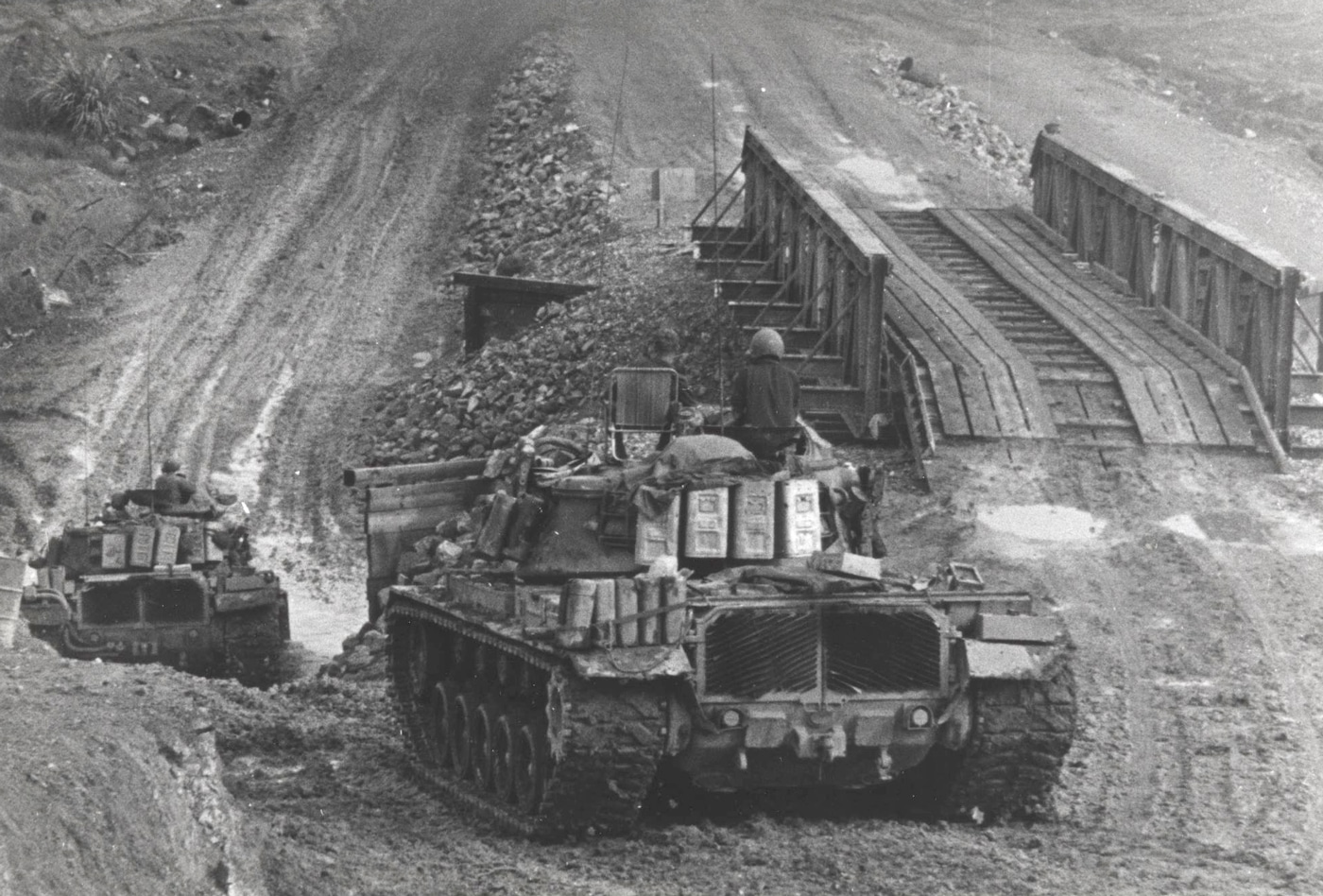
A number were subsequently captured by the PAVN (People’s Army of Vietnam) and used in the later stages of the war; but according to multiple sources, the M48 was never officially in service with the Socialist Republic of Vietnam. Instead, a number were employed as war memorials after the conflict.
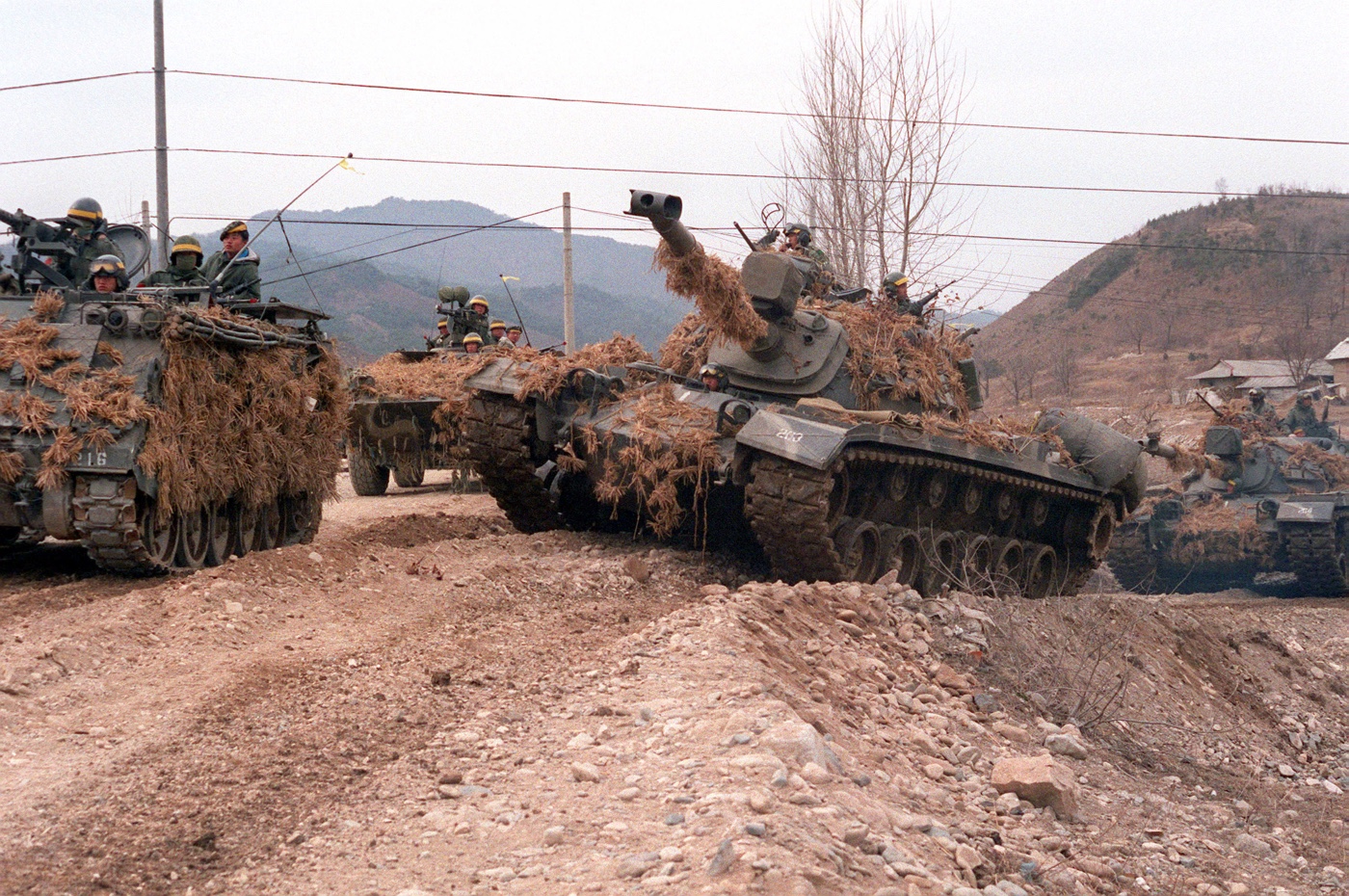
Interestingly, too, the M48’s baptism of fire against other tanks occurred in the Indo-Pakistan War of 1965. Pakistani units equipped with M47 and M48 Patton tanks faced off against Soviet T-55, British Centurion, and U.S. M4 Sherman tanks in Indian Army service. During the conflict, nearly 100 of the Pakistani tanks were destroyed, while an additional 80 more were disabled or destroyed in the succeeding Indo-Pakistan War of 1971.
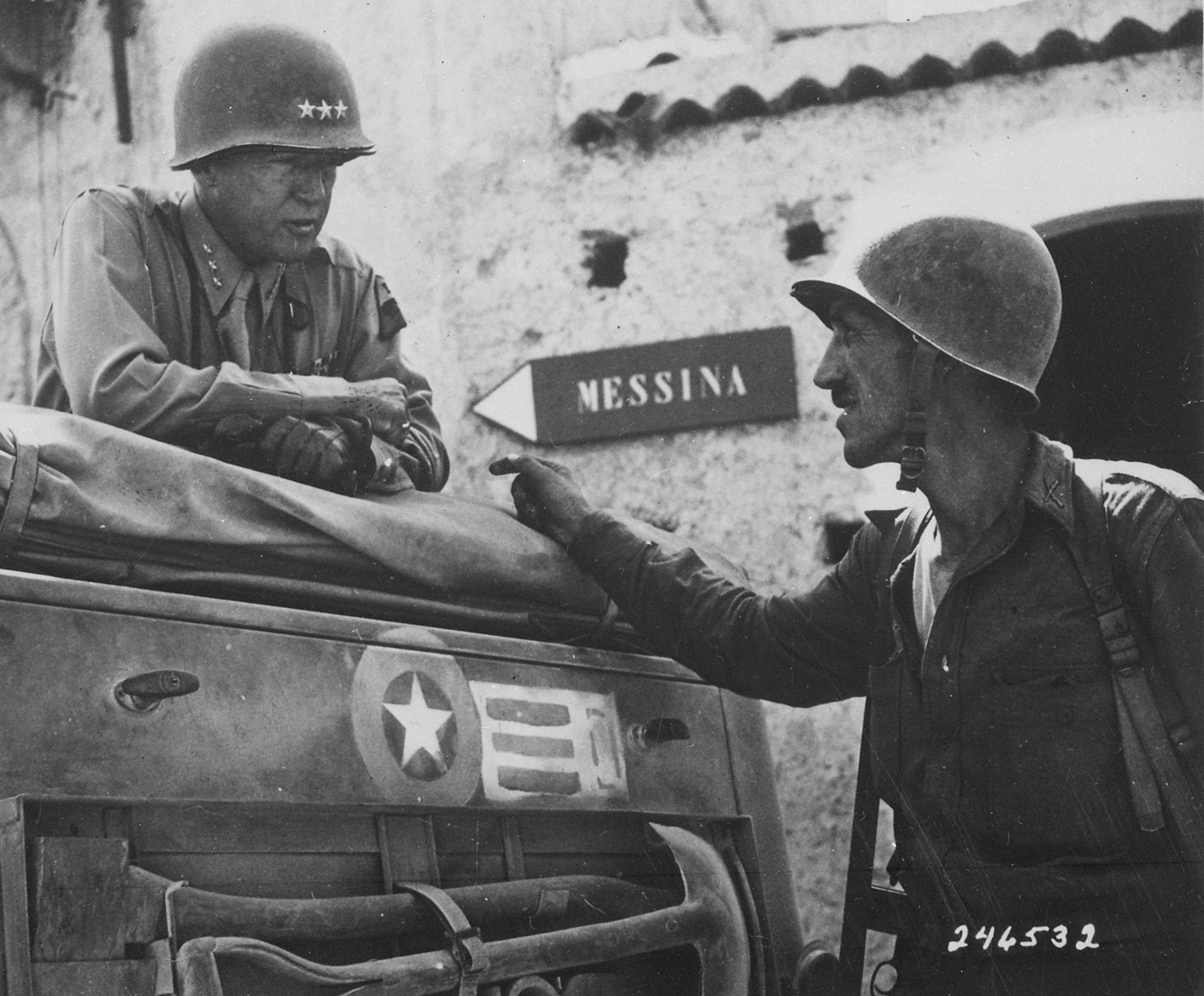
Military analysts have suggested it was as much poor leadership by the part of the Pakistani military as to the M48’s failings — a fact noted that the M48 fared better in Israeli service in the Six-Day War of 1967. In that brief conflict, M48 Pattons fitted with the more powerful 105mm main gun proved highly effective against the Egyptian Army’s T-54/55 series tanks. Both sides then took heavy losses in the Yom Kippur War in 1973, when the Israeli M48s took on T-55s and T-62s in the Battle of the Chinese Farm, the largest tank battle of the conflict.
Still Rolling
Despite the fact that the M48 Patton first entered service some seven decades ago, more than 1,500 now remain operational. In the U.S., the M48 was replaced by the M60. In turn, that model gave way to the M1 Abrams. However, other countries retain the American medium tanks in their inventories.
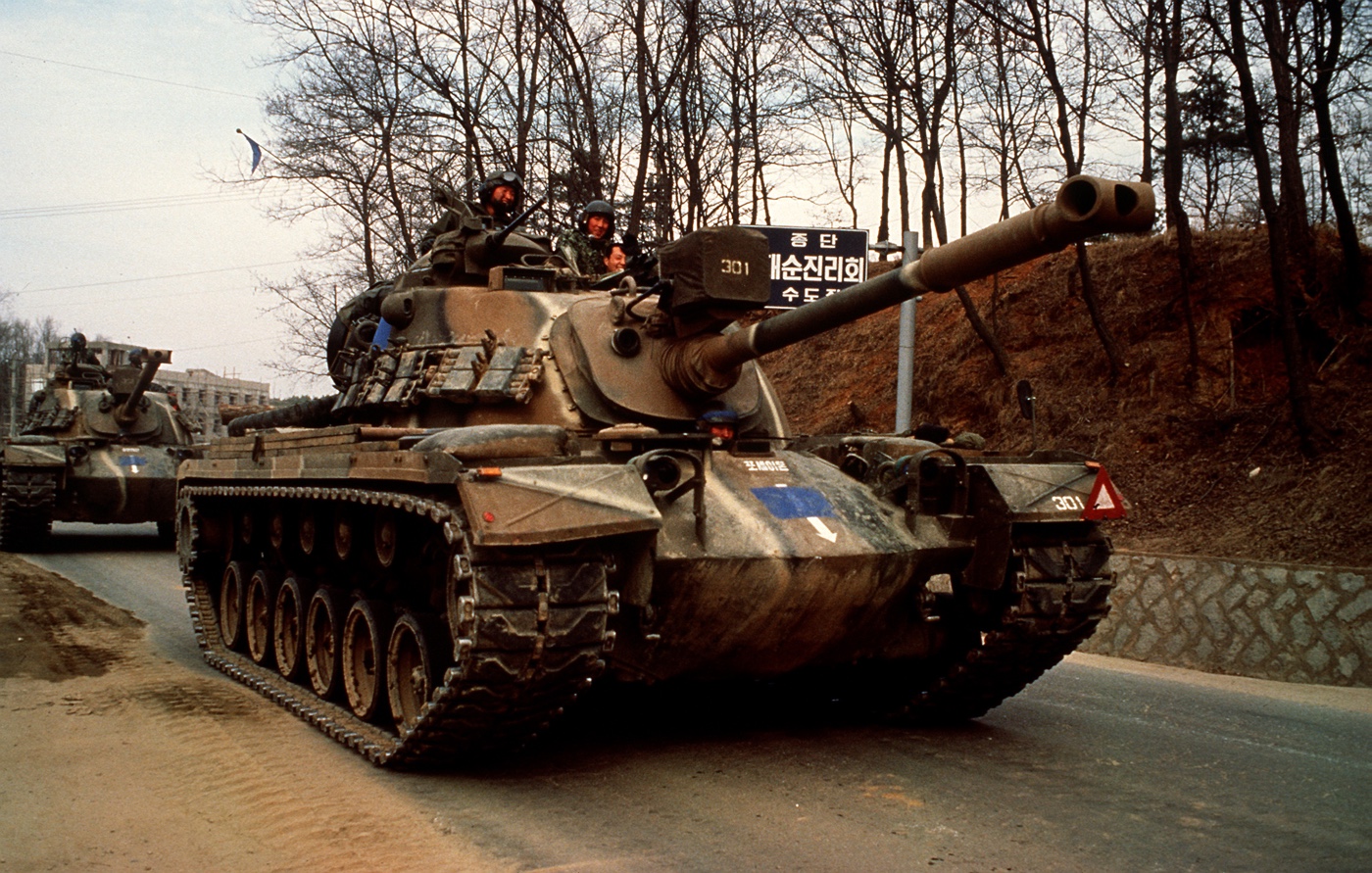
Taiwan and Turkey remain the largest operators of the Cold War armor, while South Korea, Iran, and Greece maintain a number of the tanks as well.
Though its combat history wasn’t all that stellar, it was still a new tank design befitting of “Old Blood and Guts”!
Editor’s Note: Please be sure to check out The Armory Life Forum, where you can comment about our daily articles, as well as just talk guns and gear. Click the “Go To Forum Thread” link below to jump in!
